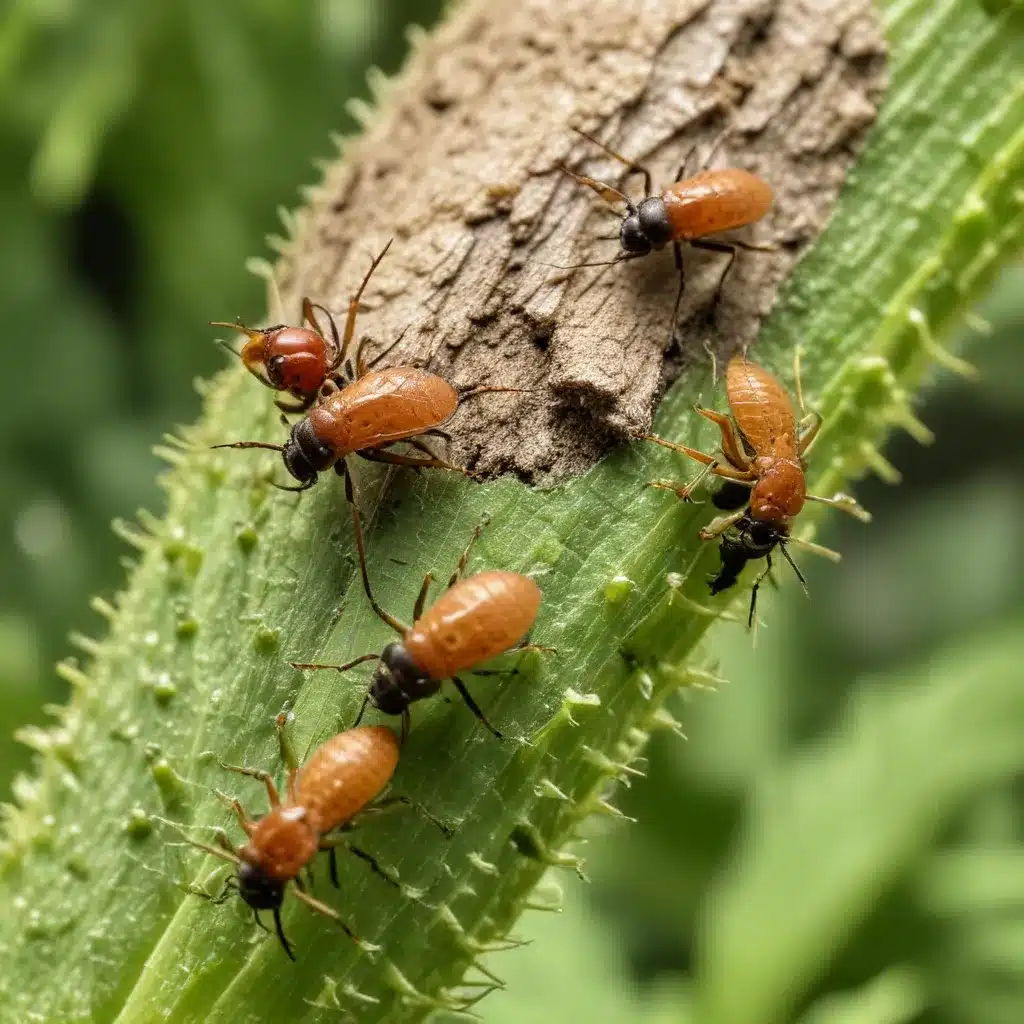
Combating Belowground Pests in South Florida
The warm, humid climate of South Florida presents unique challenges for maintaining healthy trees and palms. While aboveground pests like whiteflies and mealybugs may grab the spotlight, the real battle often lies beneath the soil. Root aphids, fungal root rots, and a host of other belowground threats can wreak havoc on even the most well-established subtropical landscapes. As a tree care specialist for South Florida Trees, I’m here to equip you with the knowledge and strategies to combat these insidious pests and keep your plants thriving.
Identifying and Managing Root Aphids
One of the most insidious belowground pests in our region is the root aphid. These tiny, sap-sucking insects can infest the roots of a wide variety of plants, from ornamental palms to fruit trees. The signs of a root aphid infestation are often subtle at first – stunted growth, yellowing leaves, and wilting – but if left untreated, they can quickly spiral out of control.
According to the University of Florida’s Integrated Pest Management (IPM) program, root aphids are particularly problematic on indoor-grown plants and herbs. Their protected, subterranean lifestyle makes them difficult to detect and even harder to control with traditional foliar sprays. Fortunately, there are several organic and cultural control methods that can be effective.
One of the best ways to combat root aphids is through good soil health and proper plant care. Encouraging strong, healthy root systems makes plants more resistant to pest infestations. This includes regular soil testing, the use of appropriate soil amendments, and proper irrigation practices. Certain beneficial insects like lacewings and ladybugs can also help keep root aphid populations in check when present.
When an infestation does occur, physical removal of affected roots or plants, followed by thorough cleaning and disinfection of the area, can help curb the spread. Insecticidal soaps and neem oil-based products can also be used as a last resort, targeting aphids directly on the roots. Just be sure to follow all label instructions carefully.
Fungal Diseases and Root Rots
In addition to insect pests, South Florida’s warm, moist climate is also a breeding ground for a variety of fungal diseases that can attack a plant’s root system. Root rots caused by pathogens like Phytophthora and Pythium are particularly problematic, leading to stunted growth, wilting, and even plant death if left unchecked.
Proper site preparation and plant selection are key to preventing root rot issues. Choosing species adapted to our local soil conditions and ensuring adequate drainage can go a long way in avoiding these fungal problems. Regular monitoring for early signs of disease, such as discolored or mushy roots, is also essential.
When fungal root diseases do arise, prompt treatment with targeted fungicides is often necessary. Timing is critical, as these products work best when applied before extensive damage has occurred. Carefully following label instructions and rotating between different modes of action can help prevent the development of resistant strains.
Optimizing Belowground Health
Beyond managing pests and diseases, maintaining the overall health of a plant’s root zone is crucial for long-term success in the South Florida landscape. This involves a multi-faceted approach that includes proper fertilization, irrigation management, and strategic cultivation practices.
Regular soil testing is the foundation of any effective fertility program. By understanding the specific nutrient requirements of your plant species and the characteristics of your local soil, you can develop a tailored fertilization regimen that supports optimal growth. Slow-release or organic fertilizers are often preferable, as they provide a steady supply of nutrients while minimizing the risk of environmental runoff.
Proper irrigation is also essential for maintaining healthy roots. While palms and many other subtropical plants thrive in our humid climate, periods of drought can still occur. Monitoring soil moisture levels and adjusting watering schedules accordingly can help prevent stress and disease.
Cultivation techniques like aeration and mulching can also benefit the root zone by improving soil structure, increasing oxygen levels, and retaining moisture. These practices, combined with regular inspections and prompt treatment of any issues, can help ensure the long-term health and resilience of your South Florida trees and palms.
Preparing for the Unexpected
No discussion of South Florida tree care would be complete without addressing the threat of tropical storms and hurricanes. These powerful weather events can wreak havoc on even the most well-maintained landscapes, with high winds and heavy rainfall posing significant risks to a plant’s aboveground and belowground systems.
To safeguard your trees and palms, it’s essential to implement preventative measures well in advance of the storm season. This includes pruning to remove dead or weakly attached branches, securing root systems with appropriate staking or guying, and ensuring that plants are receiving adequate nutrition and water to withstand the stresses of high winds and flooding.
After a storm passes, a thorough inspection of your landscape is in order. Look for signs of uprooting, stem damage, or root rot, and address any issues promptly. With diligent care and a proactive approach to pest and disease management, you can help your South Florida trees and palms weather even the most intense tropical weather events.
By combining sound horticultural practices, integrated pest management strategies, and a keen eye for potential problems, you can keep your South Florida landscape thriving, even in the face of the unique challenges posed by our subtropical environment. For more expert advice and resources, be sure to visit SouthFloridaTrees.com.


